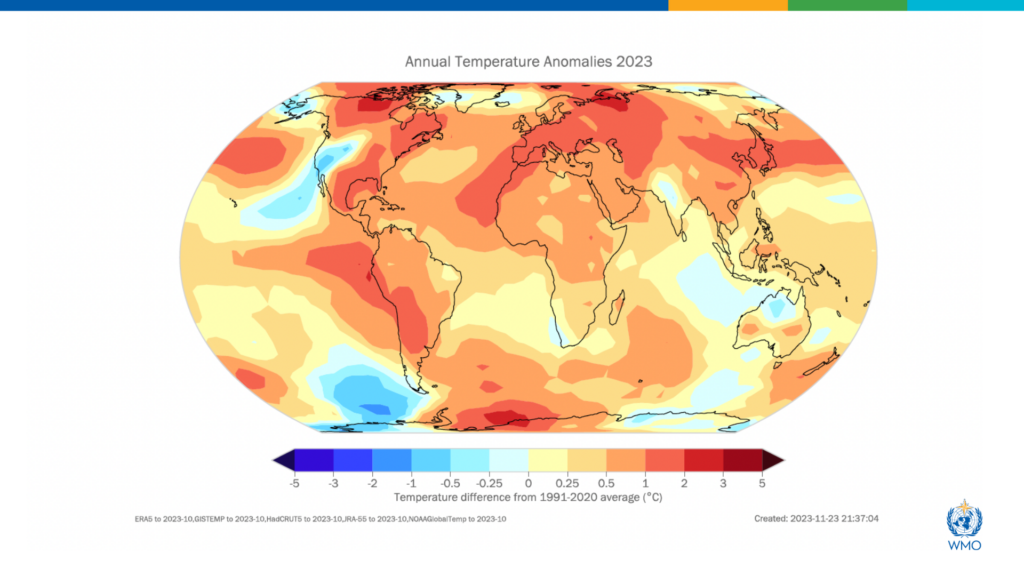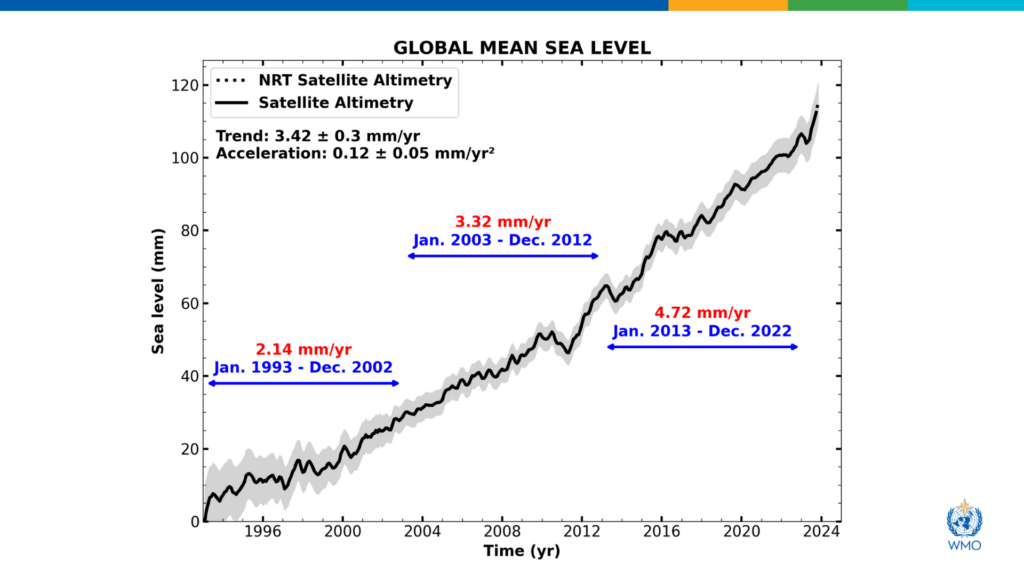2023 shatters climate records, with major impacts
‘What used to be abnormal is now the norm’
Thursday, 30th November 2023
The WMO ‘Provisional State of the Global Climate 2023’ report was published today at COP28 in Dubai. It combines input from National Meteorological and Hydrological Services (including from Ireland’s Met Éireann), regional climate centres, UN partners and leading climate scientists.
The WMO provisional report confirms that 2023 is set to be the warmest year on record and is shattering climate records, with major impacts felt worldwide.
“Greenhouse gas levels are record high. Global temperatures are record high. Sea level rise is record high. Antarctic sea ice is record low. It’s a deafening cacophony of broken records,” said WMO Secretary-General Prof. Petteri Taalas.
Key Messages
- 2023 set to be warmest year on record
- Greenhouse gas levels continue to increase
- Record sea surface temperatures and sea level rise
- Record low Antarctic sea ice
- Extreme weather causes death and devastation
The temperatures are a consolidation of six leading international datasets and up to the end of October shows that the year was about 1.40 °C (with a margin of uncertainty of ±0.12 °C) above the pre-industrial 1850-1900 baseline. The difference between 2023 and 2016 and 2020 – which were previously ranked as the warmest years – is such that the final two months are very unlikely to affect the ranking. The past nine years, 2015 to 2023, were the warmest on record.
Carbon dioxide levels are 50 % higher than the pre-industrial era, trapping heat in the atmosphere. The long lifetime of CO2 means that temperatures will continue to rise for many years to come.
The rate of sea level rise from 2013-2022 is more than twice the rate of the first decade of the satellite record (1993-2002) because of continued ocean warming and melting of glaciers and ice sheets.
The maximum Antarctic sea-ice extent for the year was the lowest on record, a full 1 million km2 (more than the size of France and Germany combined) less than the previous record low, at the end of southern hemisphere winter. Glaciers in North America and Europe once again suffered an extreme melt season. Swiss glaciers have lost about 10 percent of their remaining volume in the past two years, according to the WMO report.
The warming El Niño event, which emerged during the Northern Hemisphere spring of 2023 and developed rapidly during summer, is likely to further fuel the heat in 2024 because El Niño typically has the greatest impact on global temperatures after it peaks.
Notes:
- Read more in the WMO Provisional State of the Global Climate 2023 report here.
- On November 29th 2023, Met Éireann provided an update on the Provisional State of Ireland’s Climate 2023, which can be found here.
- The final WMO State of the Global Climate 2023 report, along with regional reports, will be published in the first half of 2024.

